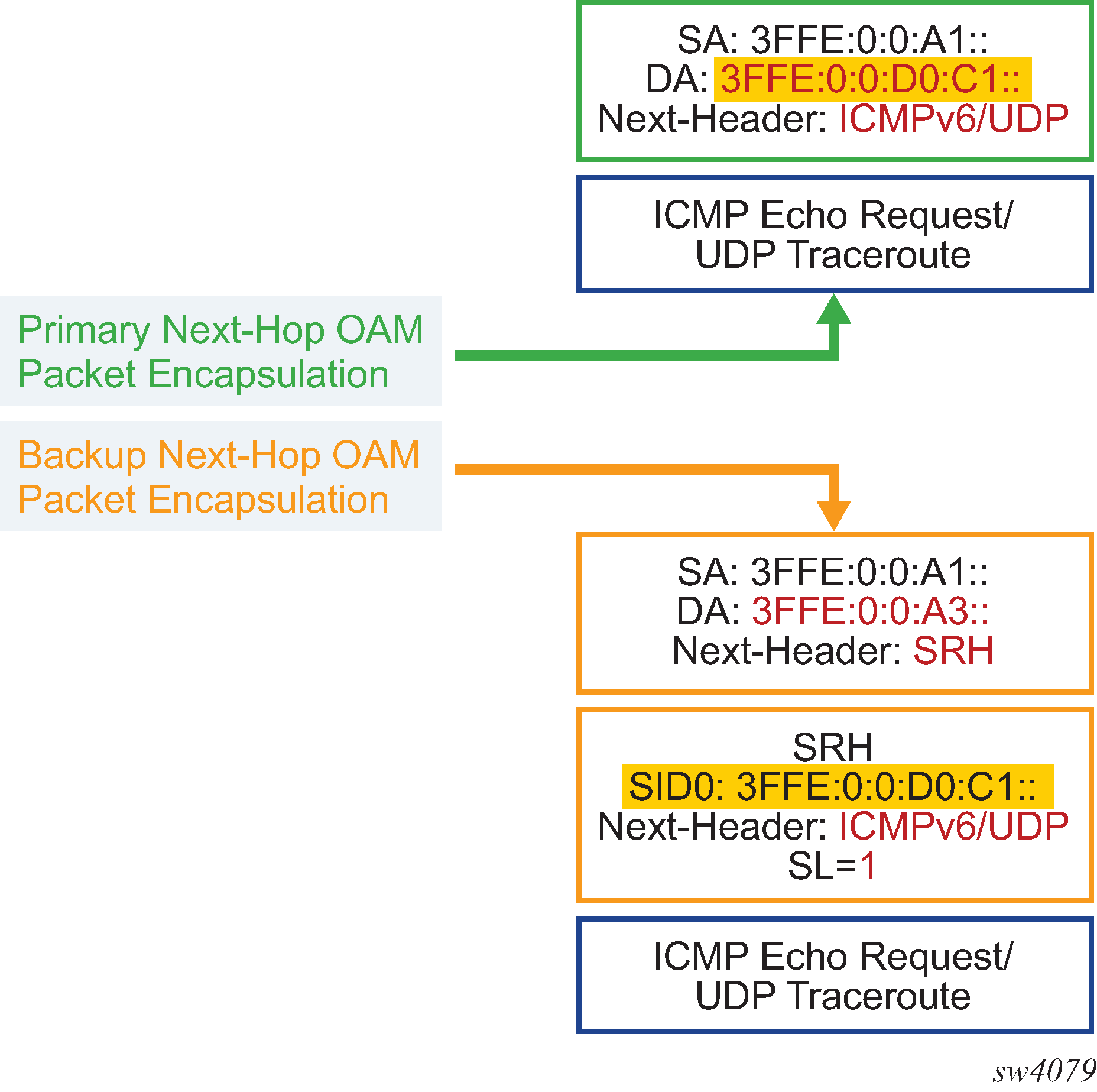The packet is encoded with a destination address set to the remote locator prefix or the specific remote SID, and the next-header field is ICMPv6 (for ping’s Echo request message) or UDP (for traceroute).The packet is encapsulated as shown in Figure: Packet encapsulation for ping or traceroute of a remote locator/SID. When the Topology-Independent Loop-Free Alternate (TI-LFA) or Remote LFA repair tunnel is activated, the LFA segment routing header (LFA SRH) is also pushed on the encapsulation of the SRv6 tunnel to the node D.

The outer IPv6 header hop-limit field is set according to the operation of the probe. For ping, the hop limit uses the default 254 or a user-entered value.
For traceroute, the hop limit is incrementally increased using one of the following:
from 1 until the packet reaches the egress PE
from the configured minimum value to the maximum value or until the packet reaches the egress PE
The ingress PE looks up the prefix of the locator or SID in the routing table and if a route exists, it forwards the packet to the next hop. The ingress PE does not check if the target SID or locator has been received in ISIS or BGP.